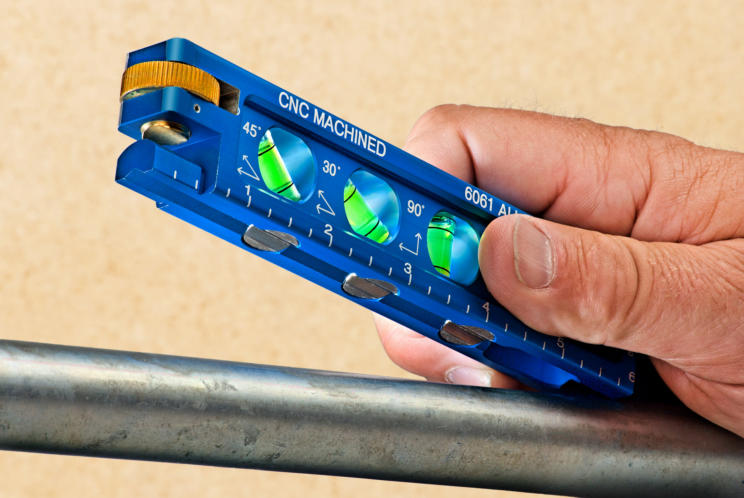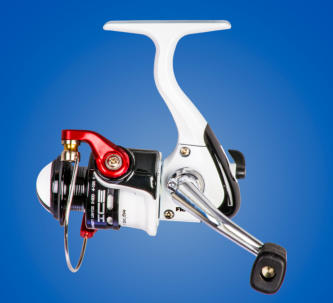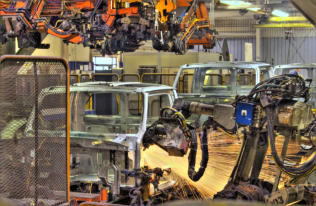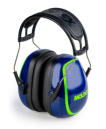630.231.9010
dan@stultzphoto.com
This website and all images © 2024 Dan Stultz/Stultz Photography
Website updated 12/3/24
Dan Stultz is a local commercial photographer, based in West Chicago, serving small businesses and large corporations in the Chicago
area for over 30 years.

Photo Insights from photographer Dan Stultz
How To’s for E-commerce Photography
July 2, 2020 Whether your business is small or large, you never know what you’ll hear when your phone buzzes and you pick up. Salesperson? (Ugh.) Scammer? (Double ugh.) New job? (Great!) Repeat client? (The best!) When I got a call from a repeat client that sells precision measuring instruments, I didn’t realize I was about to embark on a huge, enjoyable assignment. Shooting thousands of company products for selling on Amazon. All because this business realized its sales had increased by $2 million — without it doing a thing. The company discovered Amazon had purchased some of its products, placed photos of the products on the Amazon website and — cha-ching! So what could happen if my client put ALL of its products online with Amazon? Good things happened. Lots of sales; lots of profit. As many companies have discovered over the years. Although I have shot for magazines, catalogs, books, curriculum, trade show displays and billboards, I discovered e-commerce is a different animal. After learning what I needed to do, I jumped on to the steep part of the learning curve. We started shooting and processing images of these thousands of products. Now sales through Amazon are in the $10 million range for this precision instrument company. E-commerce has become one of the best ways to sell product. The biggest players are Amazon, Alibaba.com, ebay and Walmart. Industrial products sell on Grainger, FASTENAL and McMaster-Carr sites. And food/restaurant products use Sysco, U.S. Foods, Gordon Food Supply and Restaurant Depot. Perhaps your industry has its own online supply stores or you even have your own online store. Each online store has specific requirements, conventions, restrictions, and hoops to jump through. And there are a myriad of other smaller players. They are not all the same. In each and every case, the process is complicated. And that’s where I can help. Because I have been doing e-commerce photography for over ten years now and have gone through most of the struggles for you. Here are 10 tips for shooting and processing images for e-commerce use: 1. Backgrounds should be clean, not busy or distracting. Often a neutral background works best. (Amazon likes pure white with no shadow.) But this doesn’t mean the background has to be boring. Sometimes a natural or complementary background color makes your product really pop. Other times (and with certain stores’ criteria) it is necessary to remove the entire background. 2. 2. Image files should be hi-rez (meaning really big). A few online stores have a maximum file size (measured in pixels) but they all have minimum size requirements. I’m sure you’ve seen lo-rez images online, where you can’t observe details. You don’t want that for your photos! 3. Fill the frame. It’s a no-brainer – you convey more information when the product is larger in the photo. Why waste space around your product when you can enlarge it in the frame? 4. 3. Capture every product with multiple shots. Few items can be shown completely in one photo. It’s best to start with one beauty shot that shows off your product. Then zoom in for different angles to show details not easily seen in the beauty shot. Include a photo to show all items included with the purchase of the product. A photo of the product in use is also a great idea. 5. 360˚ product spins show every angle of your product. It’s kinda like a video, but online viewers can spin and zoom in on products to see details that are important to them. Click here to see how it’s done. 6. 3. Lighting is crucial. Harsh lighting creates deep shadows and washed-out highlights that hide the texture and other interesting details of the product. I usually opt for soft lights (a.k.a. soft boxes) that bathe the product in balanced light to show detail. 7. Accurate color balance is critical too. Potential buyers WANT to see the exact color of your product; they don’t want surprises. The final images should show accurate colors. 8. Show the scale. Customers don’t want to be surprised by the arrival of a product in an unexpected size. So, when necessary, it’s important to show product scale and proportion, in relationship to another item. 9. Avoid using props. Don’t include items that are ambiguous or are not included. Don’t include batteries, straps or cases in the shot if they don’t come with the purchase. 10. Naming the files is an important part of the job. Some online stores have their own rigid naming conventions (such as: customerID#-product#-size.jpg) while others allow leeway for your own naming system. It’s important to follow the rules of whatever system you are working with. Although this process can be daunting at first, I can help it go more smoothly. Give me a call or email, and we can begin the process together. See more examples of ecommerce photography © 2020 Dan Stultz/Stultz Photography back to topPhoto Blog
Observations on light, color, photo shoots, advertising and my passion for photography.


630.231.9010
dan@stultzphoto.com
1227 Elizabeth St., West Chicago, IL 60185
This website and all images © 2024 Dan Stultz/Stultz Photography Website last updated 11/12/24Serving: Illinois, DuPage County, Chicago Area, Elmhurst, Addison, Naperville, Wheaton, Aurora, Elgin,
West Chicago
Photo Insights from photographer Dan Stultz
How To’s for E-commerce Photography
July 2, 2020 Whether your business is small or large, you never know what you’ll hear when your phone buzzes and you pick up. Salesperson? (Ugh.) Scammer? (Double ugh.) New job? (Great!) Repeat client? (The best!) When I got a call from a repeat client that sells precision measuring instruments, I didn’t realize I was about to embark on a huge, enjoyable assignment. Shooting thousands of company products for selling on Amazon. All because this business realized its sales had increased by $2 million — without it doing a thing. The company discovered Amazon had purchased some of its products, placed photos of the products on the Amazon website and — cha-ching! So what could happen if my client put ALL of its products online with Amazon? Good things happened. Lots of sales; lots of profit. As many companies have discovered over the years. Although I have shot for magazines, catalogs, books, curriculum, trade show displays and billboards, I discovered e-commerce is a different animal. After learning what I needed to do, I jumped on to the steep part of the learning curve. We started shooting and processing images of these thousands of products. Now sales through Amazon are in the $10 million range for this precision instrument company. E-commerce has become one of the best ways to sell product. The biggest players are Amazon, Alibaba.com, ebay and Walmart. Industrial products sell on Grainger, FASTENAL and McMaster-Carr sites. And food/restaurant products use Sysco, U.S. Foods, Gordon Food Supply and Restaurant Depot. Perhaps your industry has its own online supply stores or you even have your own online store. Each online store has specific requirements, conventions, restrictions, and hoops to jump through. And there are a myriad of other smaller players. They are not all the same. In each and every case, the process is complicated. And that’s where I can help. Because I have been doing e-commerce photography for over ten years now and have gone through most of the struggles for you. Here are 10 tips for shooting and processing images for e-commerce use: 1. Backgrounds should be clean, not busy or distracting. Often a neutral background works best. (Amazon likes pure white with no shadow.) But this doesn’t mean the background has to be boring. Sometimes a natural or complementary background color makes your product really pop. Other times (and with certain stores’ criteria) it is necessary to remove the entire background. 2. 2. Image files should be hi-rez (meaning really big). A few online stores have a maximum file size (measured in pixels) but they all have minimum size requirements. I’m sure you’ve seen lo-rez images online, where you can’t observe details. You don’t want that for your photos! 3. Fill the frame. It’s a no-brainer – you convey more information when the product is larger in the photo. Why waste space around your product when you can enlarge it in the frame? 4. 3. Capture every product with multiple shots. Few items can be shown completely in one photo. It’s best to start with one beauty shot that shows off your product. Then zoom in for different angles to show details not easily seen in the beauty shot. Include a photo to show all items included with the purchase of the product. A photo of the product in use is also a great idea. 5. 360˚ product spins show every angle of your product. It’s kinda like a video, but online viewers can spin and zoom in on products to see details that are important to them. Click here to see how it’s done. 6. 3. Lighting is crucial. Harsh lighting creates deep shadows and washed-out highlights that hide the texture and other interesting details of the product. I usually opt for soft lights (a.k.a. soft boxes) that bathe the product in balanced light to show detail. 7. Accurate color balance is critical too. Potential buyers WANT to see the exact color of your product; they don’t want surprises. The final images should show accurate colors. 8. Show the scale. Customers don’t want to be surprised by the arrival of a product in an unexpected size. So, when necessary, it’s important to show product scale and proportion, in relationship to another item. 9. Avoid using props. Don’t include items that are ambiguous or are not included. Don’t include batteries, straps or cases in the shot if they don’t come with the purchase. 10. Naming the files is an important part of the job. Some online stores have their own rigid naming conventions (such as: customerID#-product#-size.jpg) while others allow leeway for your own naming system. It’s important to follow the rules of whatever system you are working with. Although this process can be daunting at first, I can help it go more smoothly. Give me a call or email, and we can begin the process together. See more examples of ecommerce photography © 2020 Dan Stultz/Stultz Photography back to topPhoto Blog
Observations on light, color, photo shoots, advertising and my passion for photography.










































